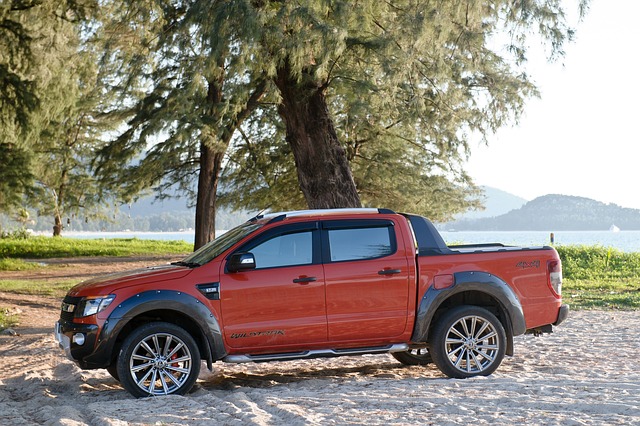When selecting a truck battery, it's crucial to match the amp-hour rating and capacity with your vehicle's manufacturer specifications to ensure optimal performance. Trucks demand robust batteries due to their heavy electrical loads and diverse accessories. For harsh conditions or frequent off-roading, advanced AGM or gel cell batteries are recommended over traditional lead-acid types due to their durability and resistance to vibration and temperature extremes. When installing a new battery, safety is paramount: always disconnect the negative terminal first, followed by the positive, to prevent electrical hazards. Clean the battery terminals to remove corrosion for better contact and performance. Securely mount the new battery in its designated tray, ensuring proper alignment of the terminals with their respective posts. Test the battery load after installation by running the truck's electrical systems to confirm everything functions correctly. Regular maintenance and following the manufacturer's guidelines will help maintain your truck battery's longevity and reliability.
When it comes to maintaining your truck’s performance, understanding how to properly install a truck battery is paramount. This comprehensive guide will navigate through the various aspects of truck battery installation, including assessing your vehicle’s specific battery requirements, comparing different types of batteries such as AGM and standard lead-acid, and offering a detailed step-by-step process for a safe and effective replacement. Whether you’re a DIY enthusiast or a professional mechanic, this article provides the necessary knowledge to ensure your truck’s electrical system operates at its best. From preparation and installation techniques tailored to different truck models, to maintenance tips that extend battery life, along with troubleshooting common issues, you’ll have all the tools needed for a successful installation.
- Understanding Your Truck's Battery Requirements
- Types of Truck Batteries: AGM vs. Standard Lead-Acid
- Preparing for Truck Battery Installation: Safety and Tools
- Step-by-Step Guide to Installing a Truck Battery
- – Disconnecting the Old Battery
- – Positioning the New Battery
- – Connecting the New Battery
- Proper Battery Placement in Different Truck Models
Understanding Your Truck's Battery Requirements

When addressing your truck’s battery requirements, it’s crucial to understand the specifications and capacity that your vehicle demands. Trucks, with their robust electrical systems and diverse accessories, necessitate a reliable battery capable of handling the load. The ideal truck battery should match the amp-hour rating specified by the manufacturer to ensure optimal performance. This rating indicates the battery’s ability to supply current over a specific period, which is essential for starting your truck’s engine and powering its systems consistently. Additionally, consider the size and group size of the battery; it must fit securely within your truck’s battery compartment without any risk of shifting or moving during operation.
Another key factor is the type of battery that best suits your truck. There are generally two types: standard lead-acid batteries and advanced AGM (Absorbent Glass Mat) or gel cell batteries. AGM and gel cell batteries are often preferred for trucks due to their resistance to vibration, longer lifespan, and ability to withstand extreme temperatures, which can be beneficial for off-road or heavy-duty applications. Regardless of the type you choose, ensure that it is compatible with your truck’s charging system to avoid damage or reduced battery life. By carefully considering these factors and selecting a battery that aligns with your truck’s specific needs, you can ensure uninterrupted performance and reliability on the road.
Types of Truck Batteries: AGM vs. Standard Lead-Acid

When it comes to powering your truck, selecting the right battery is crucial for performance and longevity. There are two primary types of truck batteries to consider: Absorbent Glass Mat (AGM) and standard lead-acid batteries. AGM batteries have gained popularity due to their robust construction and superior vibration resistance. These batteries feature a sponge-like material that holds the sulfuric acid electrolyte, which allows for better performance in a variety of positions and temperatures. This makes them an excellent choice for trucks that endure rough terrain or frequent movement, as they are less prone to leaks and can maintain a consistent charge even when tilted or inverted.
In contrast, standard lead-acid batteries are the traditional choice and are well-suited for vehicles with moderate battery usage requirements. These batteries have a liquid electrolyte solution that requires careful handling to prevent spills, especially when the truck is in motion. While they are generally more affordable than AGM batteries, their maintenance costs can increase over time due to the need for regular checks and top-ups of the electrolyte solution. Additionally, lead-acid batteries may not perform as well in extreme temperatures or shocks compared to AGM batteries, which can affect their lifespan and reliability. When selecting a truck battery, it’s important to consider factors like your truck’s usage, the climate you operate in, and your budget. AGM truck batteries offer enhanced performance and longevity for more demanding conditions, while standard lead-acid batteries serve well for routine applications. Always ensure that the chosen battery fits your truck’s specifications and provides the necessary power for all its electrical systems.
Preparing for Truck Battery Installation: Safety and Tools

When preparing for a truck battery installation, prioritizing safety and having the right tools is paramount to ensure a successful and efficient process. Begin by gathering all necessary equipment, which includes a new truck battery that matches your vehicle’s specifications, a socket set, wrench set, wire cutters or strippers, a multimeter for testing the battery charge, gloves for protection, and safety glasses. Ensure you have a clean and well-ventilated workspace to prevent any hazards from toxic gases emitted during the disconnection of the old battery.
Before removing the old battery, park your truck on a flat surface and set the parking brake for stability. Disconnect the negative (black) terminal first, using the wrench to loosen the nut, and carefully remove the cable. This prevents any electrical shorts that could occur if the metal parts of the cable were to come into contact with another part of the vehicle’s chassis. Next, disconnect the positive (red) terminal in the same manner. With both terminals disconnected, the battery can be safely removed and replaced. Once the new truck battery is installed, securely fasten it in place and reattach the terminals, ensuring a firm connection for optimal performance. Use the multimeter to check the battery’s voltage; it should read 12.6 volts for a fully charged battery when the engine is off. Always follow the manufacturer’s guidelines for your specific truck model, as installation procedures can vary. Proper preparation and adherence to safety protocols are key to a successful truck battery replacement.
Step-by-Step Guide to Installing a Truck Battery

When installing a new truck battery, safety and precision are paramount to ensure optimal performance and longevity. Begin by safely removing your old battery. For this, park your vehicle on a level surface, engage the parking brake, and disconnect the negative (-) battery cable first, followed by the positive (+) cable. This prevents any electrical surges and protects sensitive electronic components in your truck. Once the cables are disconnected, securely store the old battery to avoid short circuits or accidental reconnection.
Before installing the new truck battery, clean the battery tray and mounting area thoroughly to ensure good contact with the battery terminals. Carefully position the new battery into the tray, ensuring it’s correctly aligned according to the manufacturer’s instructions. The positive and negative terminals should match up with their corresponding posts in the battery tray. Once properly positioned, secure the battery with the provided hold-down clamps or straps to prevent any movement during operation. This is crucial for both safety and battery life.
Next, reconnect the battery cables, starting with the positive terminal. Tighten the cable connections firmly but avoid overtightening, which can damage the terminals. With everything connected and secure, perform a continuity check to ensure there are no shorts or incorrect connections. Finally, check all the electrical components that were affected by the disconnection, such as the radio, GPS, and other accessories, to confirm they’re functioning correctly. Proper installation of your truck battery will not only provide reliable power but also help maintain the performance and efficiency of your vehicle’s electrical systems.
– Disconnecting the Old Battery

When updating your truck’s power source with a new battery, the first step is to safely remove the old one. This process begins by disconnecting the existing battery. It’s crucial to take safety precautions when handling batteries, as they can store dangerous levels of energy. Always start by ensuring the vehicle’s engine and all electrical systems are turned off to prevent any risk of electric shock. Next, locate the battery tray and securely grasp the battery terminals with a pair of pliers or a battery terminal puller to loosen them. Carefully remove the negative (-) cable first, noting the position of the cables and connections to replicate them later. Similarly, disconnect the positive (+) cable in the same manner, ensuring that the connectors do not touch each other or any metal surfaces to prevent short-circuiting. Once both cables are disconnected, you can proceed to remove the battery from its tray. This step will clear the area for installing your new truck battery, which is the next phase of your upgrade. Remember to handle the old battery with care, as it too contains usable energy and should be disposed of properly at a recycling center.
– Positioning the New Battery

When installing a new truck battery, positioning it correctly is paramount for both safety and functionality. The battery should be installed in a well-ventilated area within the truck’s chassis to prevent overheating. Ensure that the mounting tray or box is secure and capable of holding the battery in place during transit and operation. It’s essential to follow the manufacturer’s guidelines for the type of battery being used, as some trucks may accommodate different sizes or types of batteries. Once you’ve selected the appropriate location, clean the terminals thoroughly with a wire brush to remove any corrosion or debris that could hinder a proper connection. This will ensure an efficient electrical link between the new battery and the truck’s electrical system, extending the life of both the battery and the system components. Position the new truck battery in its designated spot, making sure it is securely fastened with the provided hardware. The positive and negative terminals must connect to their respective posts on the battery tray; double-check these connections for tightness to avoid any future disconnections that could lead to a dead battery. After installation, conduct a load test by turning on the truck’s electrical systems to verify that all components are functioning correctly with the new battery in place. This step is crucial to confirm that your truck’s electrical system is ready for the road ahead.
– Connecting the New Battery

When installing a new truck battery, safety and correct procedure are paramount to ensure optimal performance and longevity. Begin by safely removing your old truck battery. Disconnect the negative terminal first, using a wrench to loosen the nut that secures it to the battery post. Similarly, disconnect the positive terminal, ensuring that the area is free of conductive materials to prevent any accidental short circuits. Once the old battery is removed, clean the terminals and mounting area on your truck with a wire brush to ensure a good connection with the new battery.
Now, it’s time to install the new truck battery. Position the new battery securely in its designated place within the vehicle’s chassis, ensuring it’s firmly held and cannot move or shift. Reconnect the positive terminal first, tightening the nut securely with a wrench. Then, attach the negative terminal, making sure the connection is snug but not overly tight to avoid damaging the terminal or the battery case. Double-check all connections for tightness and corrosion-free contacts. Proper installation of the truck battery will ensure that your vehicle starts reliably and that electrical systems function as intended.
Proper Battery Placement in Different Truck Models

When it comes to maintaining your truck’s performance and reliability, installing the correct battery is paramount. This article has provided a comprehensive overview of understanding your truck’s battery requirements, exploring the differences between AGM and standard lead-acid batteries, and ensuring you have the necessary safety measures and tools in place for a successful installation. By following the detailed step-by-step guide, from safely removing the old battery to correctly positioning and connecting the new one, you can ensure optimal operation of your truck’s electrical system. Remember that the placement of your truck battery can vary depending on the model, so it’s crucial to refer to your vehicle’s manual for specific guidelines. With these insights, you’re now equipped to install a truck battery effectively and efficiently, ensuring your truck remains a dependable companion on the road.



